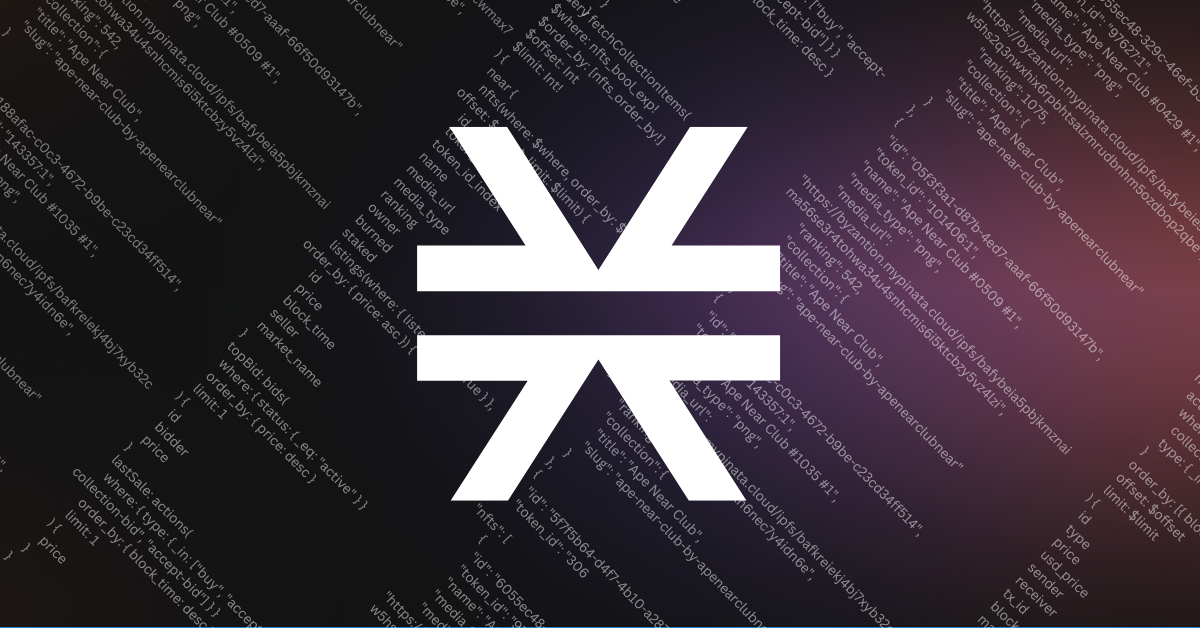
Stacks was where Indexer began, making it the first blockchain ever indexed by our team. Unlike traditional blockchains, Stacks leverages the security of the Bitcoin network by enabling developers to build decentralized applications (dApps) and execute smart contracts on top of it. With its focus on security, simplicity, and interoperability, the Stacks blockchain is revolutionizing the way decentralized applications are built and utilized. In this article, we'd like to share a few different ways you can utilize an NFT Indexer, also known as a blockchain indexer, for blockchain data analytics and building applications on Stacks.
Tools for Artists
Analytics dashboards can provide artists in web3 with valuable insights and data that can help them make better-informed decisions about their work and marketing strategies. For example, analytics dashboards can track and analyze metrics such as the number of views, likes, and shares for their work across various web3 platforms, allowing artists to gain insights into which pieces of content are resonating with their audience and which marketing strategies are proving successful.
In addition, analytics dashboards can help artists understand the demographics and preferences of their audience. For example, it might be helpful for a music artist to understand what their audience is also collecting, such as other music genres and art pieces. This information can be used to tailor marketing campaigns and content to specific audiences, thereby increasing engagement and potentially increasing revenue.
Furthermore, analytics dashboards can provide artists with real-time insights into their sales performance and revenue, allowing them to quickly adapt their marketing and sales strategies if necessary. For example, if an artist notices that a particular piece of content is selling well on a certain platform, they can focus more of their efforts on that platform and create more similar content that has proven successful.
NFT Lending Protocols
An NFT Indexer, can be helpful in creating an NFT lending platform in several ways. Firstly, an indexer can be used to track the ownership and transfer of NFTs on the blockchain, ensuring that NFTs are returned to their rightful owners at the end of a lending period. This can help reduce the risk of fraud or theft in the lending process.
Secondly, an NFT Indexer can provide real-time information on the value and popularity of different NFTs, allowing lenders to make more informed decisions about which NFTs to accept as collateral and setting appropriate lending rates.
Additionally, an Indexer can help automate the process of creating and executing smart contracts for NFT lending, making it easier and more efficient for both lenders and borrowers. By tracking the transfer of NFT ownership and enforcing the terms of the lending agreement, an Indexer can help ensure that all parties fulfill their obligations and reduce the risk of disputes.
NFT Galleries
NFT Indexers can be useful in creating an NFT gallery by allowing the gallery to display and organize NFTs based on different attributes such as artist, collection, rarity, and price. By indexing NFT data, galleries can provide users with powerful search and filtering capabilities, making it easier for users to find the NFTs they are looking for.
Furthermore, NFT Indexers can be used to track NFT sales data and market trends, allowing galleries to make informed decisions about which NFTs to display and promote. This data can also be used to create analytics dashboards for artists and collectors, providing insights into the performance of their NFTs in the market.
Understanding the Whole Ecosystem
NFT Indexers can provide valuable insights into the overall health of a blockchain ecosystem by tracking and analyzing various metrics related to NFT transactions. By indexing all NFT transactions on a blockchain, an Indexer can provide real-time insights into the number of NFTs being created, bought, and sold, as well as the overall trading volume and price trends.
These metrics can help stakeholders in the blockchain ecosystem to better understand the demand for NFTs and the popularity of different types of NFTs. This information can be used to inform business decisions, such as which types of NFTs to create or which marketplaces to list them on.
Furthermore, NFT Indexers can also provide insights into the overall health of a blockchain ecosystem by tracking the number of active wallets and users, as well as the overall network activity. This information can help stakeholders identify potential bottlenecks or issues with the network and take appropriate action to address them.
Overall, NFT Indexers, or blockchain indexers, can provide valuable insights into the health of a blockchain ecosystem, allowing stakeholders to make informed decisions and take proactive steps to improve the ecosystem.
Conclusion
As the Stacks blockchain grows and develops, there are many use cases for an NFT Indexer, or blockchain indexer, for blockchain data analytics. While we listed several helpful scenarios, there are dozens of others as well. If you're building on the Stacks blockchain, go ahead and request an API key to try out the Indexer yourself.



